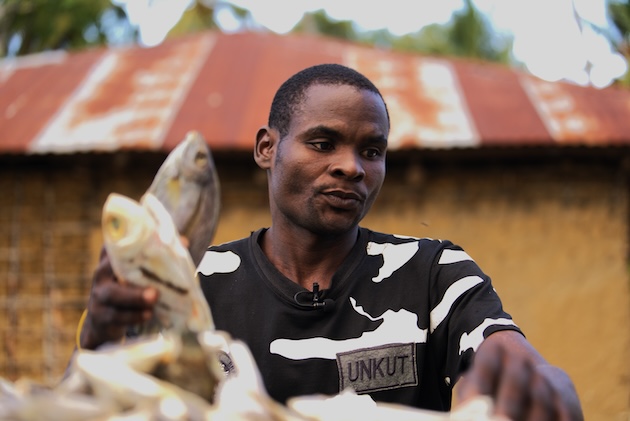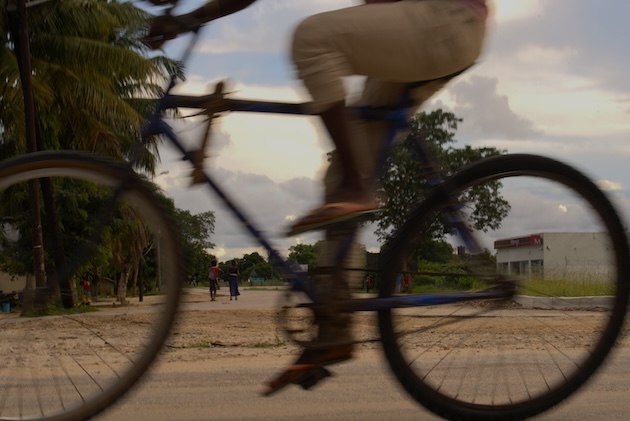Nyxoah Annonce ses Priorités Stratégiques pour 2024
Mont–Saint–Guibert, Belgique – 17 janvier 2024, 22h05 CET / 16h05 ET – Nyxoah SA (Euronext Bruxelles/Nasdaq : NYXH) (« Nyxoah » ou la « Société ») opère dans le secteur des technologies médicales et se concentre sur le développement et la commercialisation de solutions innovantes destinées à traiter le Syndrome d’Apnées Obstructives du Sommeil (SAOS). La Société a annoncé aujourd'hui, en prévision des prochaines réunions d'investisseurs, ses priorités stratégiques pour 2024.
Priorités stratégiques pour 2024
- Compléter le suivi des patients dans l'étude pivot DREAM aux États–Unis et communiquer les données d'efficacité et de sécurité d'ici le début du mois d'avril. Les données d'efficacité à 12 mois1 sur les 34 premiers patients DREAM et les données de sécurité sur tous les patients DREAM ont été présentées à SLEEP 2023, démontrant un taux de réponse à l'IAH de 65 %, un taux de réponse à l'ODI de 76 % et une sécurité conforme aux attentes. Ces données sont préliminaires et ne permettent pas de conclure au succès final de DREAM.
- Déposer le quatrième et dernier module de la demande d'autorisation de mise sur le marché PMA modulaire. La Société prévoit de soumettre le dernier module peu de temps après l'annonce des résultats de DREAM.
- Accélérer les investissements dans l'organisation commerciale américaine en vue d'un lancement fin 2024. Embauche récente de Francis Kim en tant que Chief Regulatory and Quality Officer et élargissement de l'accès au marché pour garantir le remboursement au moment du lancement.
- Compléter le recrutement dans l'étude pivot américaine ACCCESS sur le Collapse Circonférentiel Complet (CCC). Annonce récente de données publiées par des investigateurs en Europe démontrant le succès de Genio® dans le traitement des patients atteints de CCC.
- Augmentation de la pénétration du marché de la stimulation du nerf hypoglosse (HGNS) et de la part de marché de Genio en Europe. Pour 2024, nous prévoyons une croissance continue des ventes grâce aux bénéfices croissants des initiatives de vente directe aux consommateurs (DTC), à la contribution initiale du partenariat commercial avec ResMed en Allemagne et à l'expansion géographique.
“Depuis la création de Nyxoah, nous avons été guidés par la mission d'améliorer la vie des patients souffrant d'AOS. Cela a conduit au développement du système Genio HGNS centré sur le patient. La conception à incision unique, sans sonde et évolutive de Genio, alimenté et contrôlé par un dispositif portable, a trouvé un écho auprès des cliniciens et des patients et a conduit à un lancement important en Europe. La stimulation bilatérale de Genio permet le traitement du CCC, et le label a ensuite été élargi pour inclure ces patients, dont la seule option de traitement après l'échec de la PPC était jusqu'alors une chirurgie palatine majeure”, a commenté Olivier Taelman, Chief Executive Officer.
“Dans le cadre de nos efforts continus pour offrir aux patients un plus grand contrôle sur leur traitement, rendant ainsi leur sommeil à nouveau simple, nous avons ensuite reçu l'approbation pour Genio 2.1. Genio 2.1 offre aux patients un retour d'information quotidien sur l'utilisation du traitement et une autonomie pour ajuster l'amplitude de la stimulation dans des limites prédéfinies, améliorant ainsi le confort et l'observance du patient sans qu'il soit nécessaire de recourir à une procédure chirurgicale pour remplacer le composant implantable.”
“Nous sommes maintenant sur le point de franchir l'étape la plus importante de l'histoire de la Société avec la communication des résultats de DREAM dans les mois à venir. Nous prévoyons d'achever la demande d'autorisation de mise sur le marché (PMA) peu de temps après et nous accélérons la fabrication et les investissements commerciaux afin de nous assurer que nous sommes parfaitement préparés à reproduire notre succès européen aux États–Unis. Avec un lancement imminent aux États–Unis et une croissance continue en Europe, nous sommes enthousiastes pour les années à venir”.
À propos de Nyxoah
Nyxoah opère dans le secteur des technologies médicales. Elle se concentre sur le développement et la commercialisation de solutions innovantes destinées à traiter le Syndrome d’Apnées Obstructives du Sommeil (SAOS). La principale solution de Nyxoah est le système Genio®, une thérapie de neurostimulation du nerf hypoglosse de nouvelle génération centrée sur le patient, sans sonde ni batterie implantée et destinée à traiter le Syndrome d’Apnées Obstructives du Sommeil (SAOS), le trouble respiratoire du sommeil le plus courant au monde. Ce dernier est associé à un risque accru de mortalité et des comorbidités cardiovasculaires. Nyxoah est motivé par la vision selon laquelle les patients souffrant de SAOS devraient profiter de nuits reposantes et se sentir en mesure de vivre pleinement leur vie.
À la suite de la finalisation probante de l’étude BLAST OSA, le système Genio® a reçu le marquage européen CE en 2019. Nyxoah a réalisé deux introductions en bourse avec succès : sur Euronext en septembre 2020 et au NASDAQ en juillet 2021. Suite aux résultats positifs de l'étude BETTER SLEEP, Nyxoah a obtenu l’approbation marquage CE pour le traitement des patients atteints de Collapse Circonférentiel Complet (CCC), actuellement contre–indiqué dans les thérapies concurrentes. De plus, la Société mène actuellement l'étude pivot DREAM IDE en vue de l'approbation FDA et de la commercialisation aux États–Unis.
Pour plus d’informations, visitez http://www.nyxoah.com/
Attention – Marquage CE depuis 2019. Dispositif expérimental aux États–Unis. Limité par la loi fédérale américaine à une utilisation expérimentale aux États–Unis.
Déclarations prospectives
Certaines déclarations, croyances et opinions contenues dans le présent communiqué de presse sont de nature prospective et reflètent les attentes actuelles de la société ou, le cas échéant, des administrateurs ou de la direction de la société concernant le système Genio®, les études cliniques prévues et en cours sur le système Genio®, les avantages potentiels du système Genio®, les objectifs de Nyxoah en ce qui concerne le développement, la voie réglementaire et l'utilisation potentielle du système Genio® ; l'utilité des données cliniques pour l'obtention éventuelle de l'approbation de la FDA pour le système Genio® ; les données de l'essai pivot DREAM US de Nyxoah ; la demande d'approbation de la FDA ; l'entrée sur le marché américain, les contributions du partenariat commercial de ResMed en Allemagne ; et les résultats d'exploitation, la situation financière, les liquidités, les performances, les perspectives, la croissance et les stratégies de l'entreprise. De par leur nature, les déclarations prévisionnelles impliquent un certain nombre de risques, d'incertitudes, d'hypothèses et d'autres facteurs qui pourraient faire en sorte que les résultats ou événements réels diffèrent matériellement de ceux exprimés ou sous–entendus dans les déclarations prévisionnelles. Ces risques, incertitudes, hypothèses et facteurs pourraient avoir une incidence négative sur le résultat et les effets financiers des plans et événements décrits dans le présent document. En outre, ces risques et incertitudes comprennent, sans s'y limiter, les risques et incertitudes énoncés dans la section “Facteurs de risque” du rapport annuel de la société sur le formulaire 20–F pour l'exercice clos le 31 décembre 2022, déposé auprès de la Securities and Exchange Commission (“SEC”) le 22 mars 2023, et des rapports ultérieurs que la société dépose auprès de la SEC. Une multitude de facteurs, y compris, mais sans s'y limiter, les changements dans la demande, la concurrence et la technologie, peuvent faire en sorte que les événements, les performances ou les résultats réels diffèrent de manière significative de tout développement anticipé. Les déclarations prospectives contenues dans le présent communiqué de presse concernant des tendances ou des activités passées ne constituent pas des garanties de performances futures et ne doivent pas être considérées comme une déclaration selon laquelle ces tendances ou activités se poursuivront à l'avenir. En outre, même si les résultats ou les développements réels sont conformes aux déclarations prospectives contenues dans le présent communiqué de presse, ces résultats ou développements peuvent ne pas être indicatifs des résultats ou développements des périodes futures. Aucune déclaration ou garantie n'est donnée quant à l'exactitude ou à l'équité de ces déclarations prévisionnelles. En conséquence, la Société décline expressément toute obligation ou tout engagement de publier des mises à jour ou des révisions des déclarations prospectives contenues dans le présent communiqué de presse à la suite d'un changement des attentes ou d'un changement des événements, conditions, hypothèses ou circonstances sur lesquels ces déclarations prospectives sont basées, sauf si la loi ou la réglementation l'exige expressément. Ni la Société, ni ses conseillers ou représentants, ni aucune de ses filiales, ni les dirigeants ou employés de ces personnes ne garantissent que les hypothèses sous–jacentes à ces déclarations prospectives sont exemptes d'erreurs et n'acceptent aucune responsabilité quant à l'exactitude future des déclarations prospectives contenues dans ce communiqué de presse ou quant à la survenance effective des développements prévus. Vous ne devriez pas accorder une confiance excessive aux déclarations prospectives, qui ne sont valables qu'à la date du présent communiqué de presse.
Contacts :
Nyxoah
David DeMartino, Chief Strategy Officer
david.demartino@nyxoah.com
+1 310 310 1313
1 Pour que l'étude soit concluante, il faut qu'au moins 63 % des 115 patients répondent à l'IAH et à l'ODI lors du suivi à 12 mois.
Pièce jointe

GLOBENEWSWIRE (Distribution ID 1000909240)





